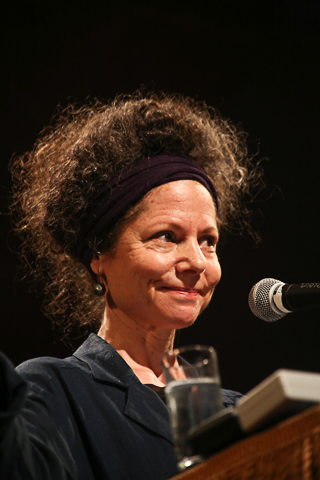EFFECTS THAT EPA FAILED TO MEASURE
When the Roeders returned home, two days after the fire started, Angie experienced headaches, shortness of breath and a metallic taste in her mouth. She started a Facebook group, Moss Landing Power Plant/Vistra Fire Symptoms, to connect with others who had become ill. Eventually, more than 4,000 people signed up. They had symptoms like Angie's, along with worsening of existing ailments, persistent sore throats, bloody noses, migraines, difficulty swallowing and blistering skin. Animals had also become ill, and animal stillbirths had increased.
Two weeks after the fire, wanting to know what toxins it released and what the long-term effects could be, the Roeders and some of their neighbors founded Never Again Moss Landing (NAML). Michael Polkabla, an industrial hygienist, suggested that people test for residual toxins by wiping outdoor, non-metalic surfaces with "ghost-wipe" tissues, a verifiable controlled method. Adhering to "chain-of-custody" protocols to ensure their samples' legal validity, Brian Roeder assembled, distributed and collected 124 kits and sent them to ALS, a testing lab in Salt Lake City.
Meanwhile, Dr. Ivano Aiello, a scientist at Moss Landing Marine Laboratories and department chair of geological oceanography at San Jose State, took topsoil samples from the Elkhorn Slough Reserve, immediately adjacent to Vistra's BESS facility. This seven-mile stretch of wetland marsh with winding tributaries connected to Monterey Bay hosts more than 700 species of plants and marine life, including pelicans, sea lions and (threatened) sea otters. For a decade, Aiello has studied how to remediate this estuary, which has been exposed to pollution from the Moss Landing power plant since it was built in the 1950s. His pre-fire tests provided a critical baseline for comparing topsoil samples before and after the fire.
Aiello sent his samples to California's Department of Toxic Substances Control.

The Elkorn Slough Reserve, with Vistra's power plant in the top left.
(Image by Western Ecological Research Center (WERC)) Details DMCA
THE STUDIES' RESULTS
There's never been a BESS fire of Moss Landing's size or magnitude-- or, because of NAML's citizen-led, community-wide effort, a test of samples so geographically widespread. The Never Again Moss Landing group sampled surfaces up to 40 miles from the fire. According to the ALS Lab, their samples showed heavy metal surface deposits increased from less than five parts per billion (PPB) before the fire to as much as 690 ppb after the fire.
These findings correlated exactly with Dr. Aiello's findings. His post-fire samples showed hundreds to thousand-fold increases in concentrations of nickel, manganese and cobalt-- materials used in lithium-ion batteries. Toxic to aquatic species and humans, these heavy metals will chemically transform as they move, potentially, through our food web-- and could endanger it.
How could NAML's and Dr. Aiello's samples turn out so differently from the EPA's findings? When a thermal runaway fire burns (at up to 5000 degrees Fahrenheit), toxic metals and dioxins are not destroyed. They vaporize into a mist and blend with moisture in the air. They become too small for some instruments (like the ones that EPA used) to measure.
When the Moss Landing fire started, the EPA immediately tested the ground for hydrogen fluoride, a chemical so toxic that exposure to one drop can maim and kill. However, aerosolized hydrogen fluoride is lighter than air-- and therefore almost impossible to find with ground instruments. EPA also looked for particulate matter of 2.5 microns and higher-- but these sizes are larger than the vaporized emissions.
After the BESS's metals and chemicals exploded into skies above the facility and vaporized, the mist that formed traveled sideways, cooled off and descended onto surfaces of land and water-- which NAML and Dr. Aiello sampled. (Thousands of residents in Monterey, Santa Cruz and San Bemnito Counties also inhaled this mist.)
WHO PROTECTS ECOSYSTEMS AND THE PUBLIC HEALTH?
Brian Roeder expected Vistra Corporation to protect its shareholders and deny responsibility for the fire and its health impacts. He did not expect the EPA's inadequate testing or the state's lack of support for the community or the fire's victims. He salutes County Supervisor Glenn Church, who noted that "government does not have the knowledge to regulate this technology, and industry does not have the know-how to control it." Supervisor Church aims to keep the facility off line until there is a full accounting of the fire's cause and fallout.
(Note: You can view every article as one long page if you sign up as an Advocate Member, or higher).





